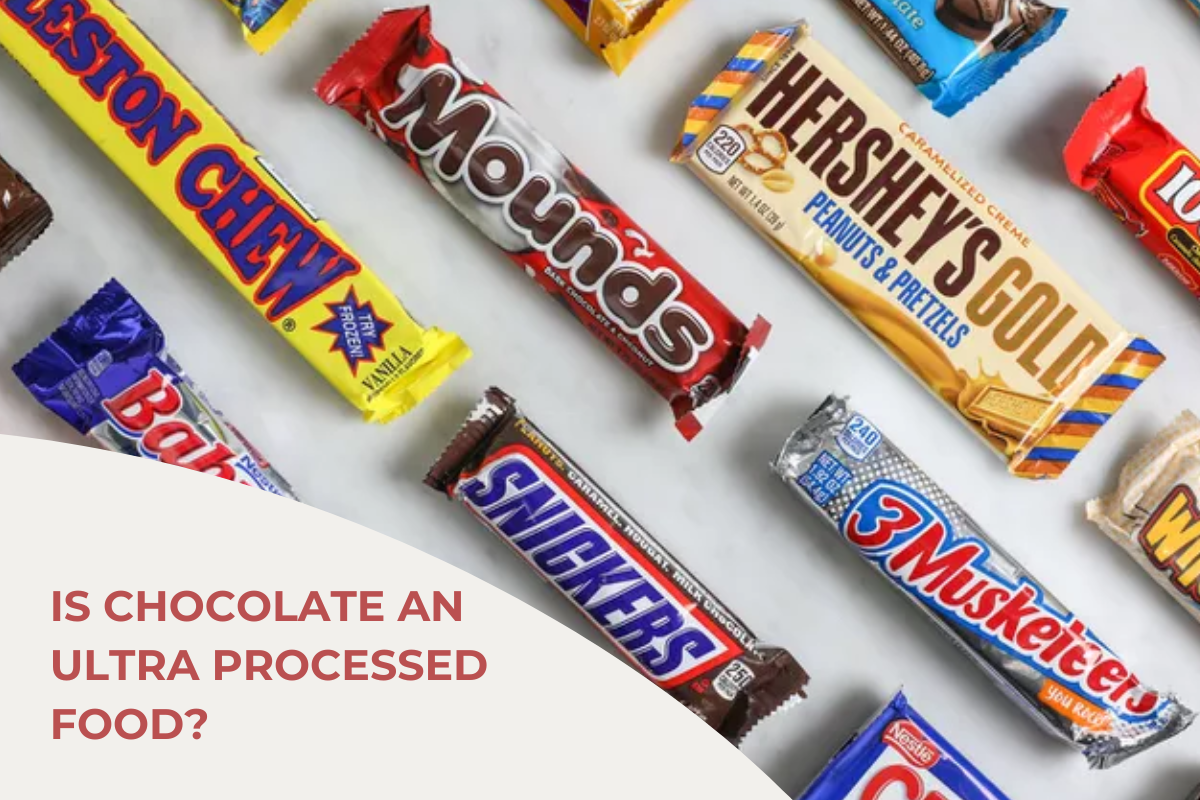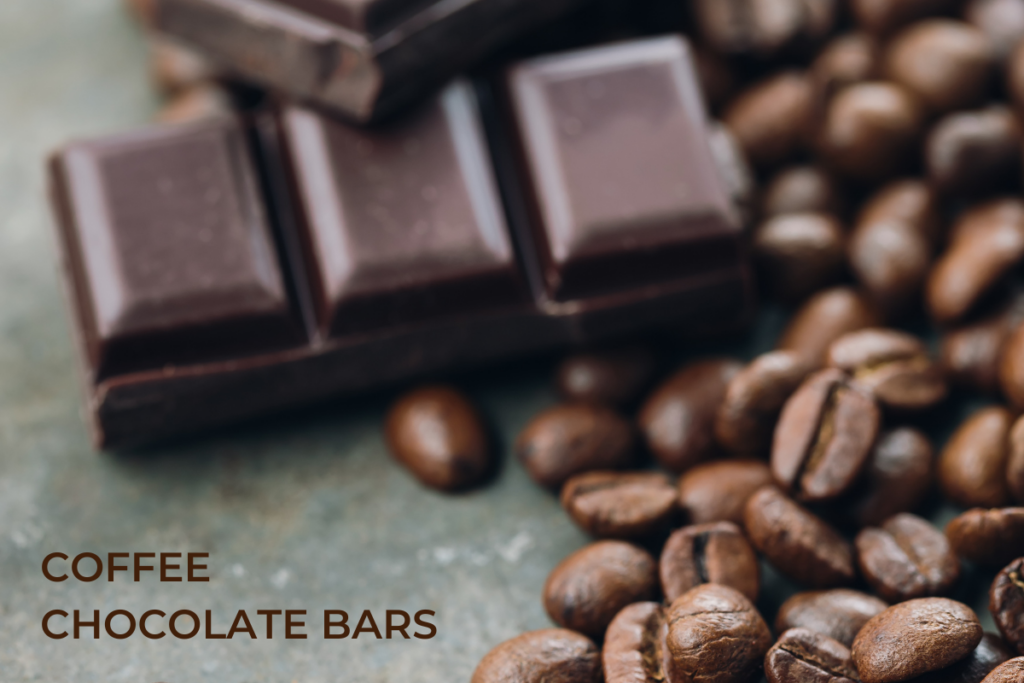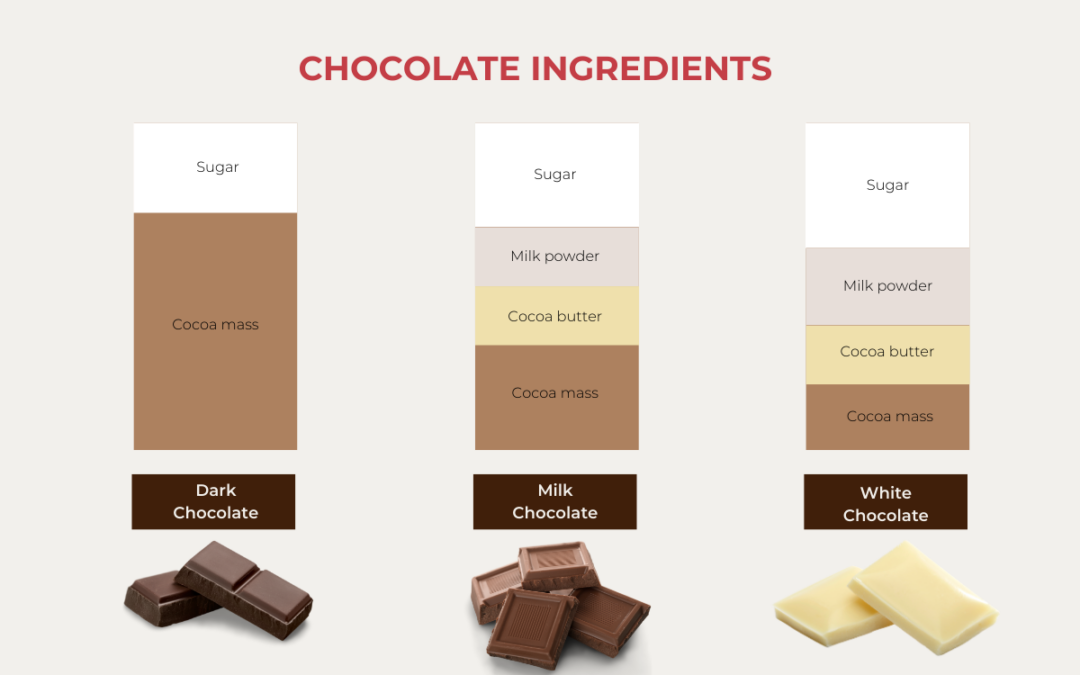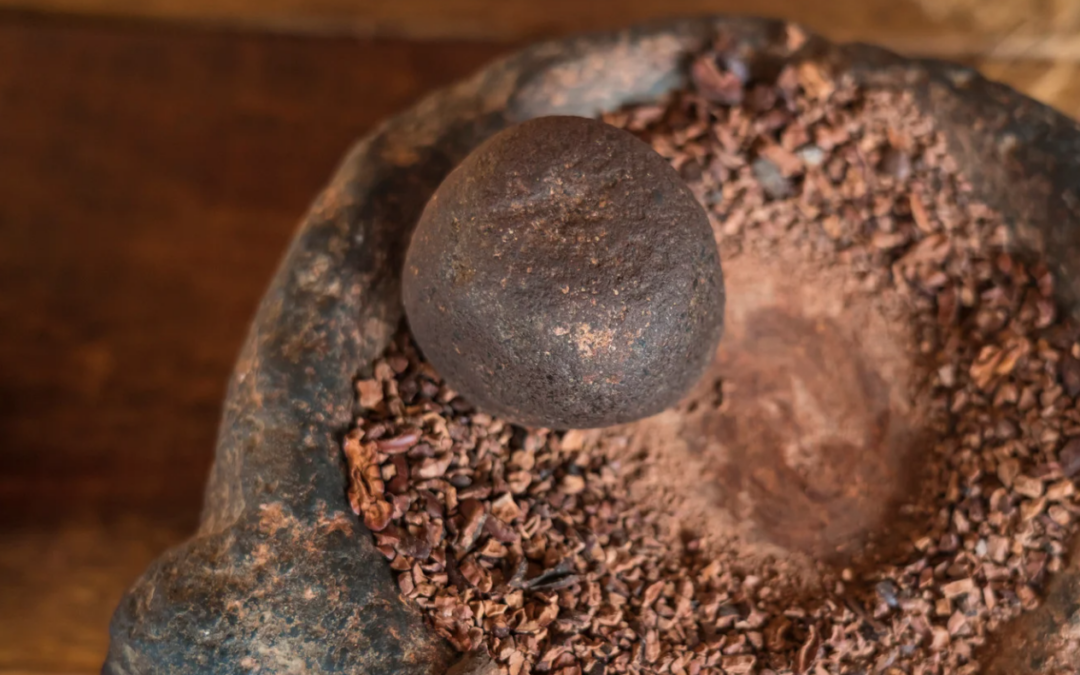Ultra-processed foods are often the topic of debate when discussing diet and nutrition. But where does chocolate fit into this conversation? Is it considered an ultra-processed food or a natural food? This article will break down what ultra-processed foods are, look at how chocolate is made, and see if different types of chocolate are classified differently or not. We’ll explore whether the chocolate we enjoy is heavily processed, and try to help you understand its place in the world of processed foods.
Definition of ultra processed foods
Ultra-processed foods are factory-made foods that include ingredients you typically wouldn’t use when cooking at home. These foods are made with unusual sugars, oils, fats, and artificial additives such as preservatives, flavorings, and colorings that are not typically available to the home chef. They’re heavily processed, and often a convenient quick-serve option, but in the end, they are less healthy for you. Examples are sugary snacks, sodas, ready-to-eat meals, and some packaged baked goods. They’re designed to last a long time on the shelf and still be appealing, and they don’t offer the same nutritional value as less processed, whole foods. They are also often designed to be tasty but less satisfying so that you are enticed to eat more.
Processing levels in chocolate production
In mass-produced chocolate or “industrial” chocolate, additives are more likely to appear on the ingredient label, such as lecithin, PGPR, vanillin (artificial vanilla) and sometimes preservatives used to extend shelf life. With artisan or fine-flavored chocolate, these additives are minimized or avoided altogether. The use of flavorings and additives can vary greatly depending on the type of chocolate product being produced, with some chocolates being made from only cocoa beans and sugar, while others might have a variety of added ingredients for flavor and appearance. Some ingredients are added simply to allow the machinery to process the chocolate more rapidly (for example, lecithin and PGPR reduce the viscosity of chocolate and allow it to flow better through the machinery).
So, is chocolate considered an ultra-processed food? Some mass-produced chocolates could be, due to the use of unusual fats, milk proteins and sugars, as wel as artificial additives. Over the past year, the focus on health and social responsibility among major corporations has grown, particularly within the cocoa industry. Transparency and clear disclosure of ingredients have become essential (and mandatory on most products), as consumers increasingly demand to know what’s in their products and where the ingredients are sourced. While large chocolate companies are beginning to make adjustments and show some progress, there is still much more that needs to be done.
In contrast, bean-to-bar or “craft” chocolate makers offer a more pure product. These producers prioritize quality, craftsmanship, and the integrity of their ingredients, typically avoiding unnecessary additives. This results in a purer, more authentic chocolate that truly captures the essence of the cacao bean. Some chocolates are still stone-ground, reminiscent of how chocolate was made centuries ago, rather than rapidly processed by high-tech machinery. By choosing bean-to-bar chocolate or making your own from scratch, you can enjoy chocolate that is free from additives, ensuring a more natural and wholesome treat.
Some chocolate makers, like Dandelion Chocolate in San Francisco, are considered purists even within the craft chocolate movement. They only use two ingredients to make all their chocolate bars – just cocoa beans and sugar. Many craft chocolate makers will add extra cocoa butter and sometimes real vanilla and natural lecithin, but that’s usually the extent of the ingredients.
In conclusion, chocolate from large manufacturers is indeed considered a ultra processed food due to the extensive refining and addition of ingredients that go beyond the simple combination of cocoa beans, cocoa butter, sugar, and milk powder. These processes often strip the ingredients of their original nutritional value (and flavor!), resulting in a product high in added sugars and fats, which contribute to the high-calorie, low-nutrient profile typical of ultra-processed foods. The inclusion of artificial flavors, stabilizers, and preservatives, which are usually absent in traditional or artisanal chocolate, further classifies these products as ultra-processed. However, chocolate made with pure ingredients and without preservatives by smaller, artisanal makers does not fall into this category and is not considered an ultra-processed food.
At the end of the day, if you’re not sure, check the label. If you see any ingredient listed that you don’t recognize or that you can’t buy at your local supermarket, then it’s probably ultra-processed.
For more great articles and recipes, check out the rest of our CocoTerra blog.
If you have any questions or comments, feel free to contact us through our social media channels. We are @cocoterra_co on Instagram and Pinterest and @cocoterraco on X (aka Twitter) and Facebook.








